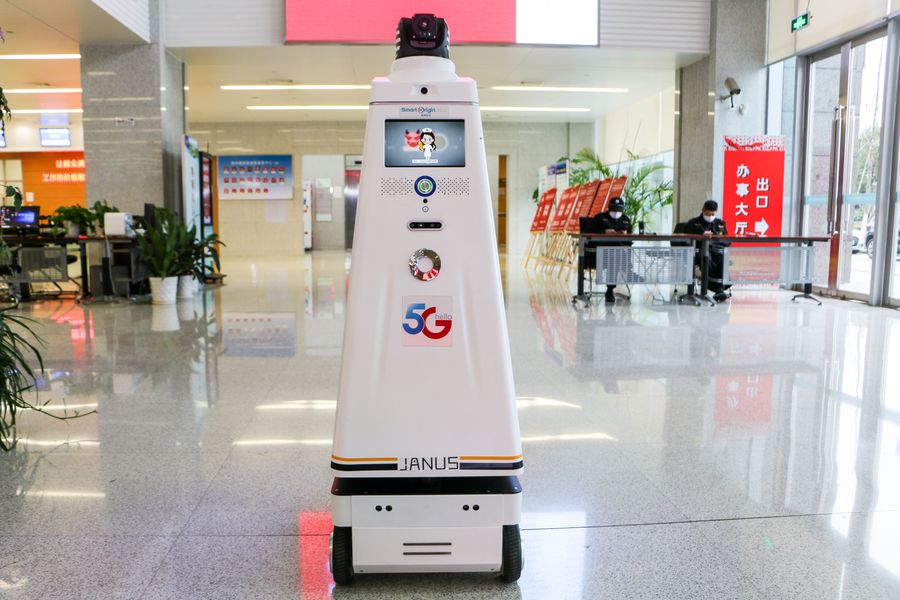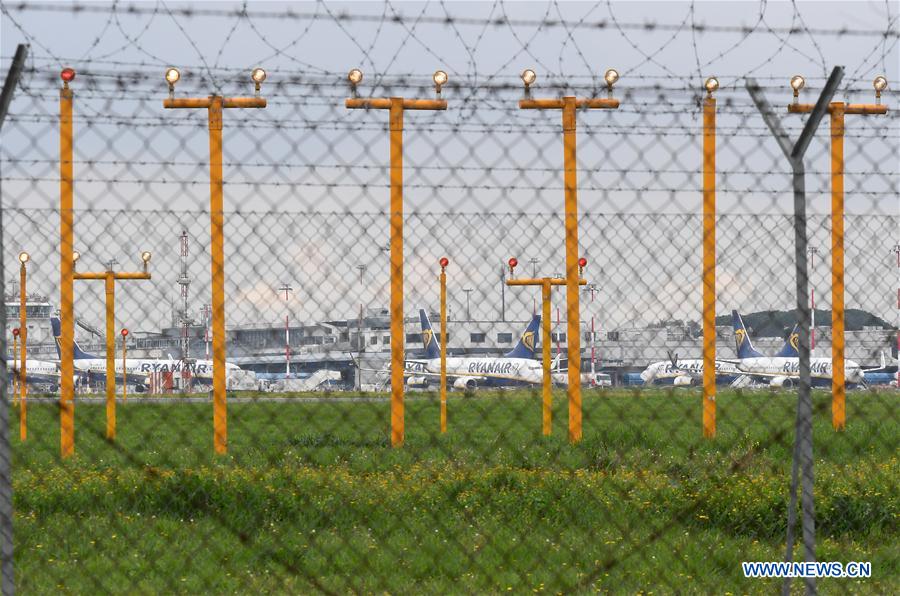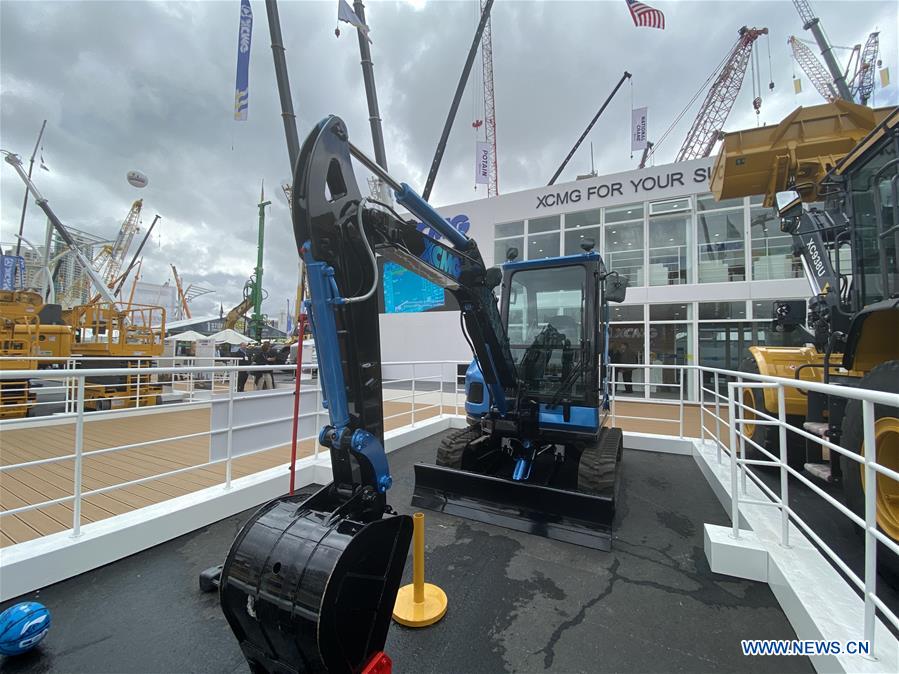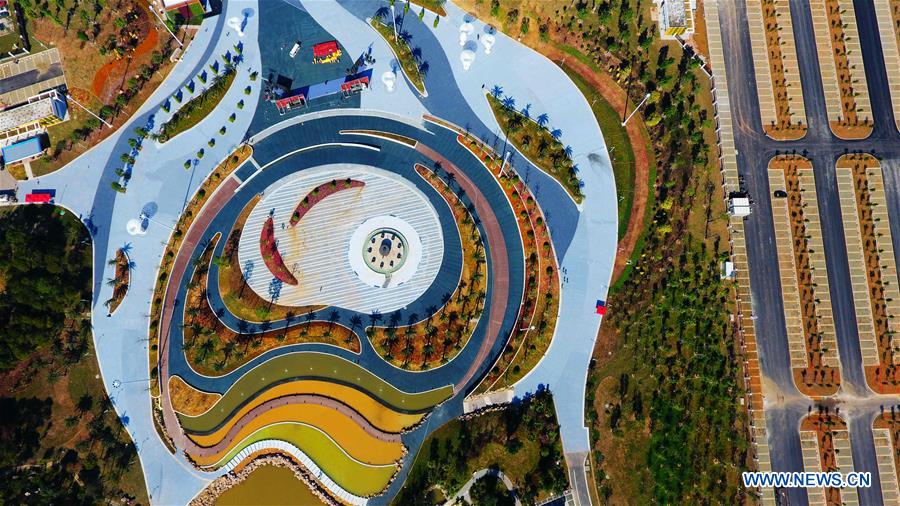The deployment of cutting-edge technologies in China's battle against the coronavirus has been very opportune. Such a public health emergency has shown the world how effective technologies can be in offering humanitarian relief.
by Xinhua writers He Leijing, Qin Huajiang, Zhu Xiao and Yan Rui
NANJING, March 14 -- From 5G robots, 3D-printed supplies to far-reaching medical advances, China has tackled the novel coronavirus with its tech prowess, which is proven effective as more promising signs signal progress in the country's anti-virus fight.
Cute, swift robots delivering packages, AI-backed voice assistants and unmanned drones with a loudspeaker reminding people to wear masks are no longer confined to the realm of science fiction, as they are actually taking place across China.
A smart mobile robot, with functions like facial recognition and temperature screening, has been patrolling in the city of Suzhou, east China's Jiangsu Province, to help control the spread of the coronavirus.
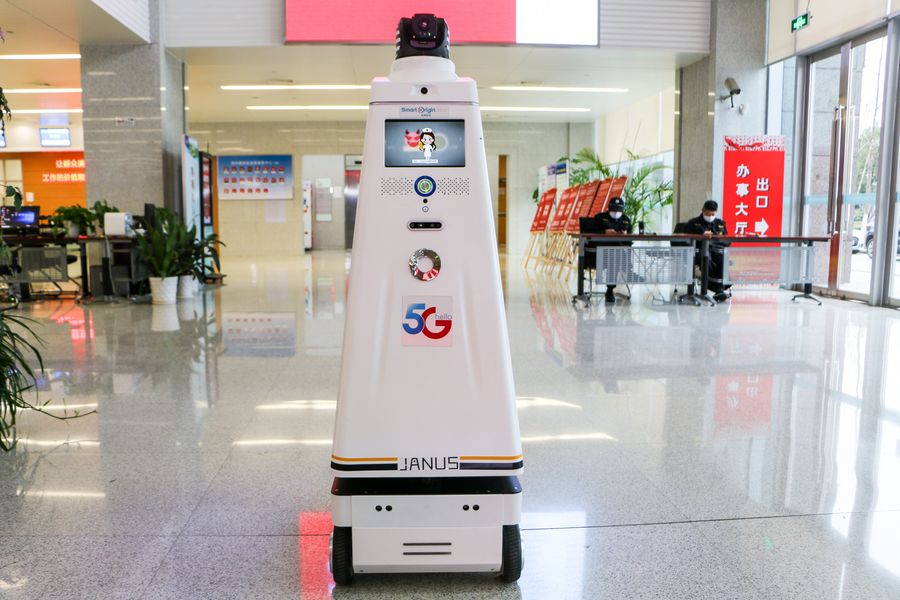
A smart mobile robot, with functions like facial recognition and temperature screening, patrols at an administrative service center in Suzhou, east China's Jiangsu Province, Feb. 21, 2020. (Xinhua)
Featured with technologies of 5G, cloud computing and intelligent vision, the robot can simultaneously track more than 30 people, according to the Suzhou Innovation Research Institute of Nanjing University, one of its developers.
"The robot can tell whether people are wearing masks. And if not, it will beep and give a verbal reminder," said Chen Jie, a researcher with the institute.
In Nanjing, capital city of Jiangsu, robots are replacing deliverymen during the epidemic. Launched by leading Chinese e-commerce company Suning.com, the robots are utilized to complete door-to-door deliveries as many neighborhoods have restricted access after the virus outbreak.
According to Suning, the robot has a maximum loading capacity of 145 liters and will be disinfected after each delivery. With a positioning accuracy of fewer than 50 mm, it can map out delivery routes and avoid obstacles, working for up to 10 hours on a charge.
The robot has also played its part in the city of Wuhan, the epicenter of the epidemic, by delivering urgent medical supplies and daily necessities after the city implemented strict traffic restrictions.

